What is the James Webb Space Telescope and when will it launch?
- Published
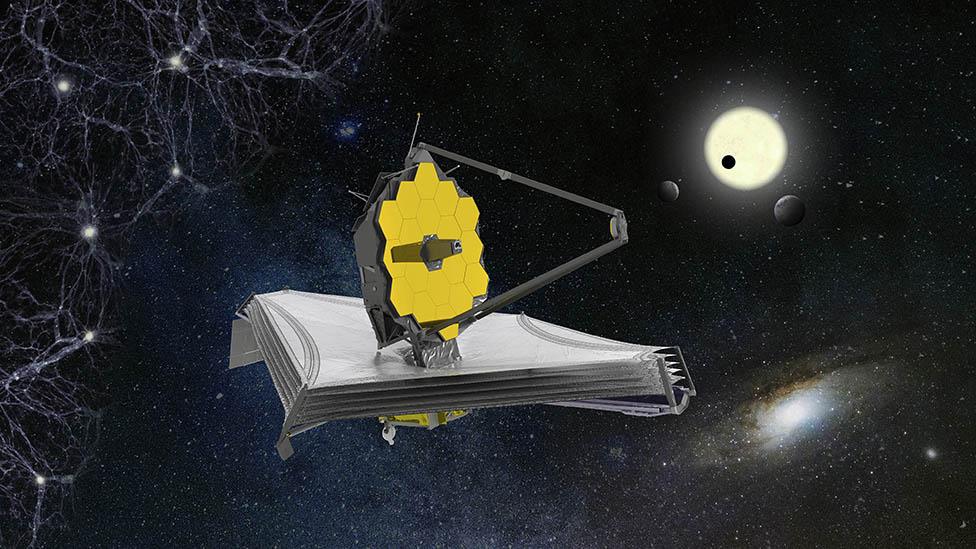
An artist's view of the James Webb Space Telescope
Nasa is preparing to launch a space telescope that will see further into the Universe than anything else ever built.
The James Webb Space Telescope (JWST) has taken 30 years and $10bn (£7.5bn) to develop, and is being described as one of the grand scientific endeavours of the 21st Century.
What is the goal of this telescope?
The telescope will be able to see just about anything in the sky. However, it has one overriding objective - to see the light coming from the very first stars to shine in the Universe.
These pioneer stars are thought to have switched on about 100-200 million years after the Big Bang, or a little over 13.5 billion years ago.
Webb will be picking out groupings of these stars. They are so far away, their light - even though it moves at 300,000km (186,000 miles) per second - will have taken billions of years to travel the cosmos.
It should be possible for Webb to see (or least detect a faint glow from) the moment when the darkness ended and those first stars flickered into life.
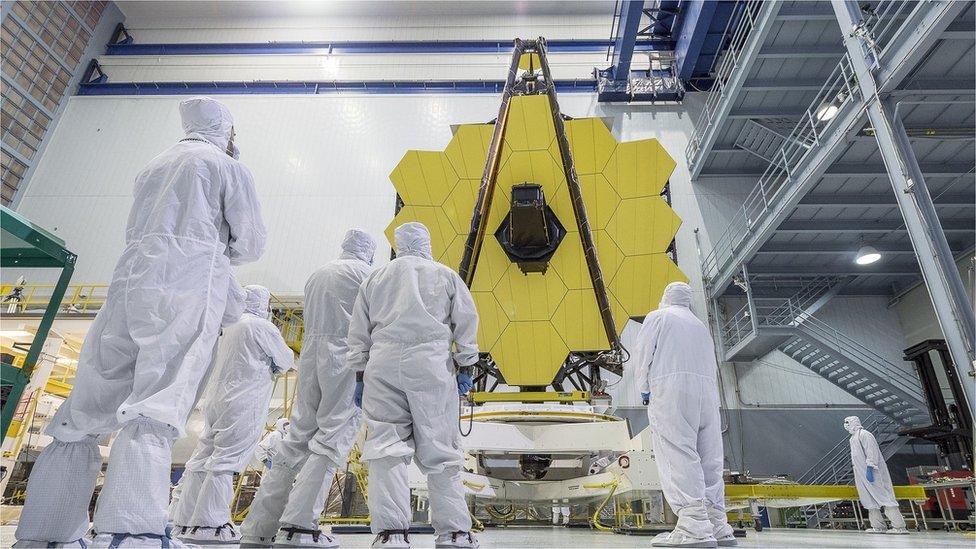
This mirror will be one of the most important parts of the telescope
Why would we want to see the first stars?
When the Universe was formed in the Big Bang, it contained only three chemical elements - hydrogen, helium and a smattering of lithium.
Every other chemical element - including those vital to life, such as carbon and oxygen - had to be forged, or "manufactured", by nuclear reactions at the centre of stars.
Webb will help us understand the origins of everything we see around us, and how we came to be.
How does Webb differ from existing space telescopes?
It's much bigger than the Hubble telescope, which has been orbiting Earth since 1990.
Hubble collects light using a main mirror that's 2.4m (7.8ft) across, while Webb has a primary mirror that's 6.5m in diameter.
With all the other associated equipment, Webb is about the size of a tennis court. It's so big, in fact, it has to be folded to fit inside its launch rocket.
But the key aspect of Webb is that it is tuned to detect light that Hubble cannot - in the infrared. This light is invisible to the human eye, but it's the type of light in which the glow from the most distant objects in the Universe will show up.
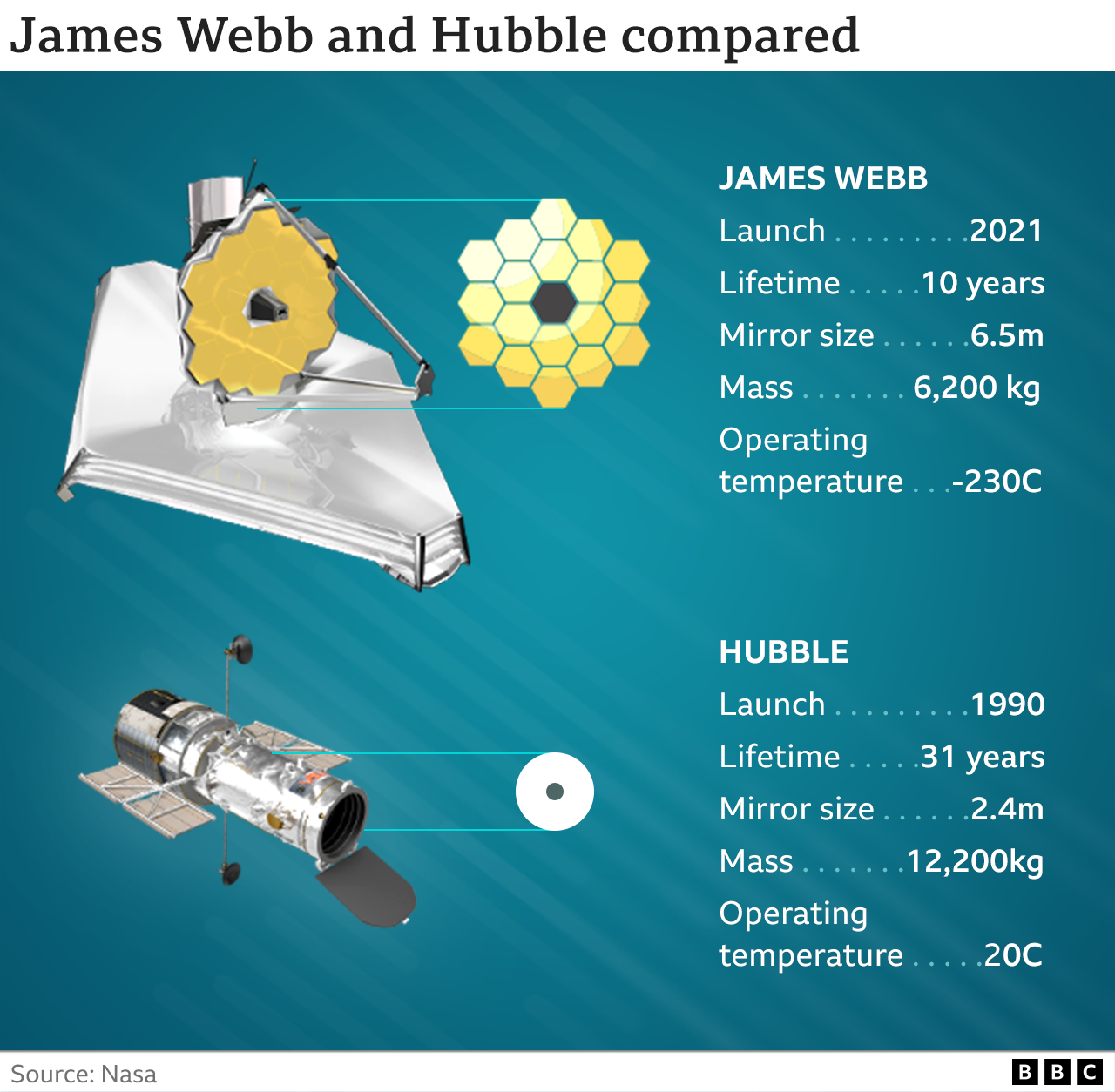
When will it launch?
At the moment, Webb - named after James E Webb, the Nasa boss who oversaw the Apollo Moon-landing project - is scheduled to go into orbit on Saturday 25 December.
It will be launched on a European Ariane-5 rocket from French Guiana. The European Space Agency is a partner on the project, and has agreed to take on the responsibility of getting Webb into space.
Webb is easily the most valuable payload ever put on an Ariane. Fortunately, the rocket has a reputation for being very dependable.
The rocket will hurl the telescope about one million miles (1.6 million km) from Earth.
At that distance, it can make observations free from the occasional shadowing effects it would experience if operating closer to our world.
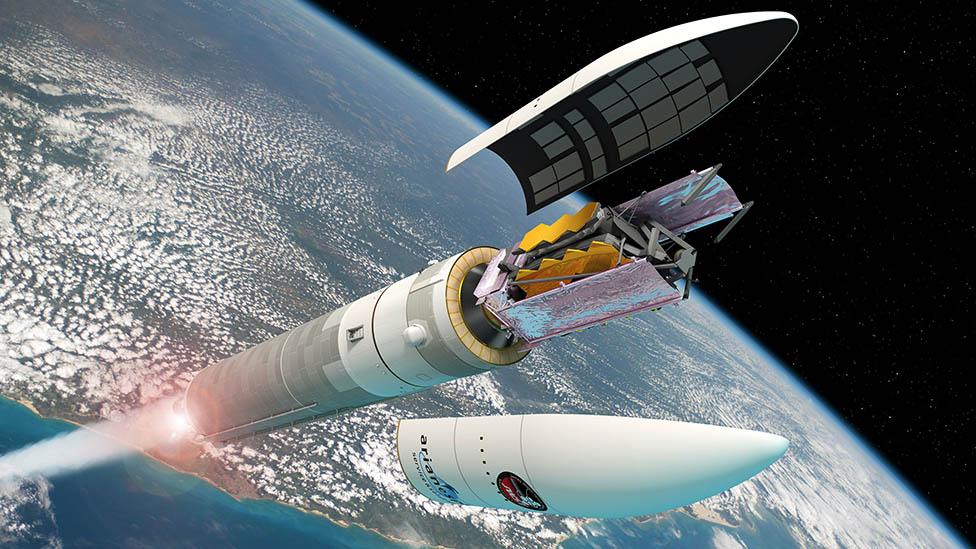
JWST is being launched on an Ariane rocket from French Guiana
Can astronauts service Webb?
No - it will be stationed too far from Earth for astronauts to reach.
And even if they could get out to Webb, its design does not allow for instruments and other worn-out parts to be replaced, as they were when Nasa crews visited Hubble in the space shuttle.
Webb will have a fuel supply that should keep it stable in orbit for 10 years. It's not completely out of the question that its fuel tank could be topped up by a robotic craft at some point in the future, but this prospect is not in the current plan.
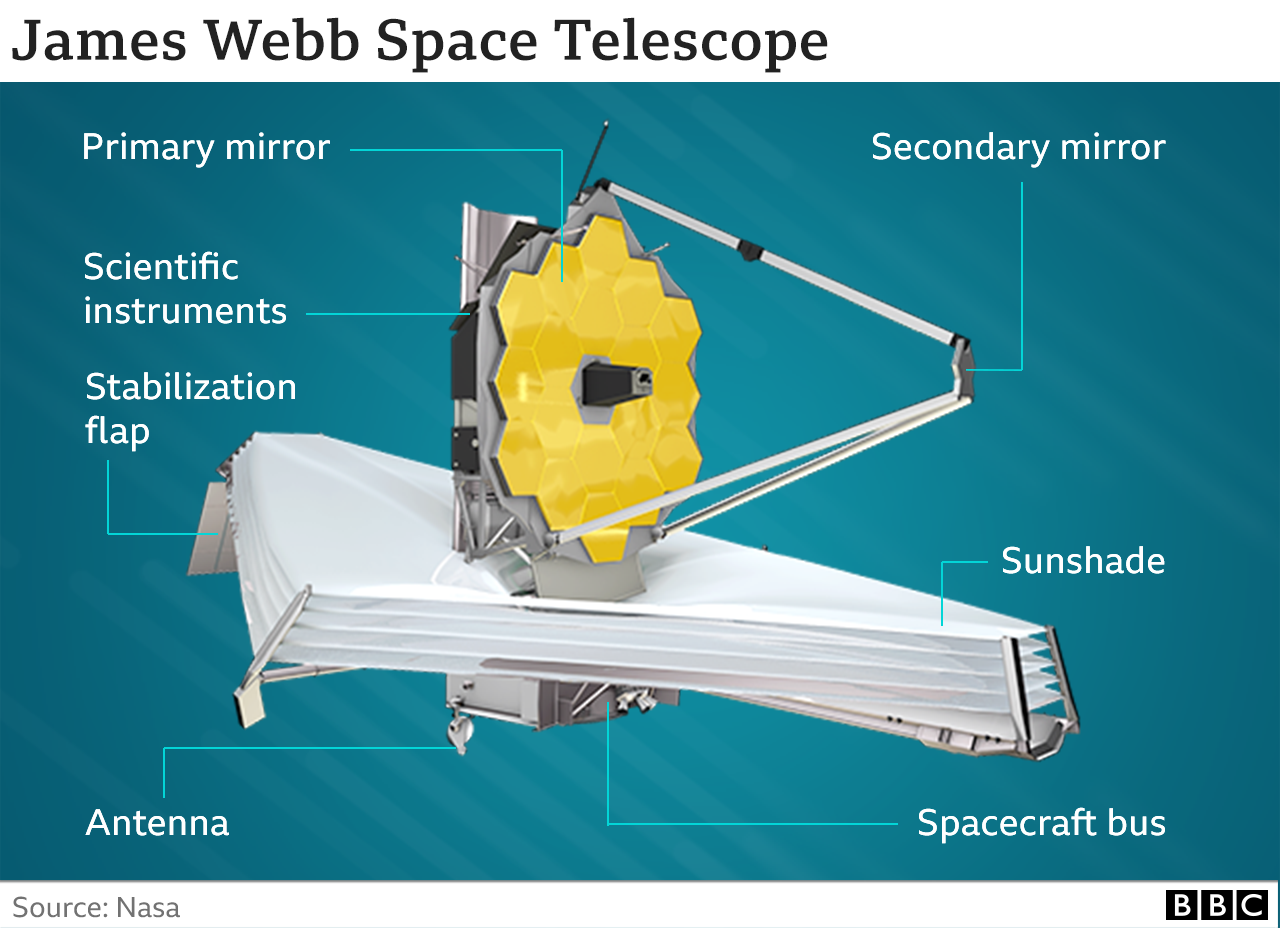
How much has Webb cost and why?
Nasa spent $8.8bn on Webb's design and build, and it will put in a further $860m to support five years of mission operations. This gives an American total of $9.7bn.
The European Space Agency has invested about €700m (£590m) in the project, contributing to two of Webb's four instruments and providing the Ariane launch rocket. The Canadian Space Agency (CSA) also put in about CA$200m (£120m).
It all adds up to a figure in excess of $10bn (£7.5bn; €9bn; CA$12.7bn).
It's true Webb is years behind schedule, and it's suffered on occasions from poor project management. But some of the money has been spent on technology developments that have had wider application elsewhere - for instance, a measurement tool created for Webb is now used in precision eye surgery.
For context, Hubble has so far cost close to $15bn in today's prices. Few would doubt its worth after all its discoveries over the past 30 years, and the James Webb Space Telescope is expected to be no less revolutionary.
